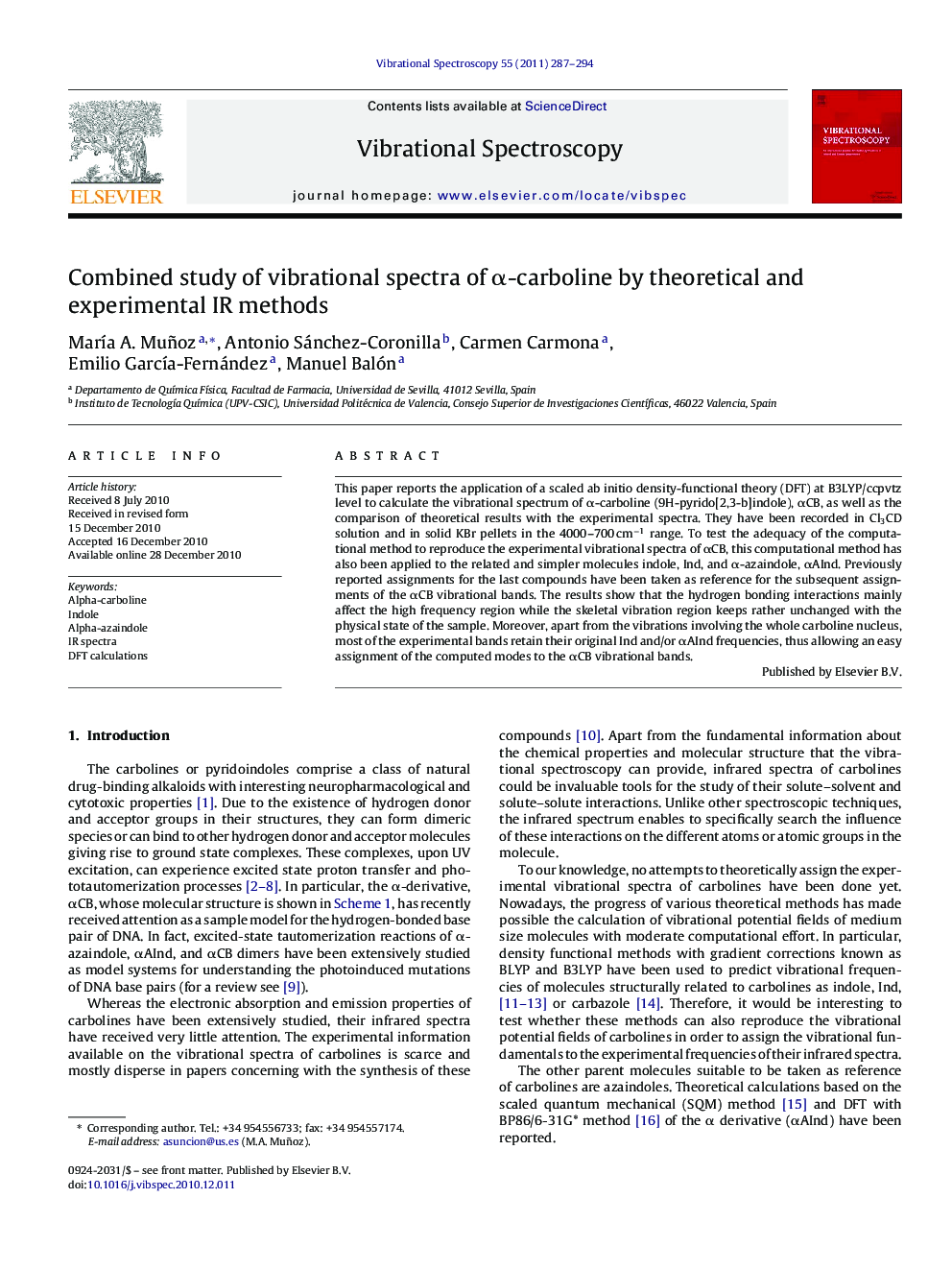| Article ID | Journal | Published Year | Pages | File Type |
|---|---|---|---|---|
| 10564656 | Vibrational Spectroscopy | 2011 | 8 Pages |
Abstract
This paper reports the application of a scaled ab initio density-functional theory (DFT) at B3LYP/ccpvtz level to calculate the vibrational spectrum of α-carboline (9H-pyrido[2,3-b]indole), αCB, as well as the comparison of theoretical results with the experimental spectra. They have been recorded in Cl3CD solution and in solid KBr pellets in the 4000-700 cmâ1 range. To test the adequacy of the computational method to reproduce the experimental vibrational spectra of αCB, this computational method has also been applied to the related and simpler molecules indole, Ind, and α-azaindole, αAInd. Previously reported assignments for the last compounds have been taken as reference for the subsequent assignments of the αCB vibrational bands. The results show that the hydrogen bonding interactions mainly affect the high frequency region while the skeletal vibration region keeps rather unchanged with the physical state of the sample. Moreover, apart from the vibrations involving the whole carboline nucleus, most of the experimental bands retain their original Ind and/or αAInd frequencies, thus allowing an easy assignment of the computed modes to the αCB vibrational bands.
Keywords
Related Topics
Physical Sciences and Engineering
Chemistry
Analytical Chemistry
Authors
MarÃa A. Muñoz, Antonio Sánchez-Coronilla, Carmen Carmona, Emilio GarcÃa-Fernández, Manuel Balón,
